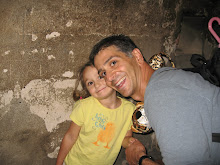When Archimedes discovered how to prove the purity of a gold object, the story goes, he ran naked through the streets of Syracuse shouting “Eureka!” The anecdote illustrates the depth of emotion a person feels when resolving a problem. Some neuroscientists contend that the pleasure center of the brain is activated when it solves a tough problem.
I make no claim to medical knowledge, but as a scholar of the humanities I do understand the power of stories. Neuroscience is but one factor in explaining the persistence of a folkloric narrative genre in our culture: the conspiracy theory.
Of course, pleasure isn’t the first emotion that springs to mind when thinking of conspiracy theories. But conspiracy theories take disparate pieces of information—sometimes even fictional information—and put them in a satisfying framework. They offer an explanation for the true (if hidden) nature of reality. And for those who believe in them, they tickle the pleasure center by answering the riddle of the real way that things are. They also appeal to a second, related emotion: hubris. Reality simply must be more complicated than what it appears on the surface—and I have figured out what you lesser minds cannot see!
Although stories similar to conspiracy theories have existed for centuries, their modern form has its roots in a nineteenth-century book. The Protocols of the Elders of Zion was purported to be the true document of the Jews’ plans for global domination. Their tools were the banks, governments, and the modern media, all of which they supposedly controlled. The book thus offered a simple explanation to the social changes caused by the capitalist system and industrialization. It took unrelated cultural phenomena and gave them a narrative—and more importantly someone to blame. In reality, The Protocols was a forgery composed by the Russian security services at a time when Eastern Europe was racked with pogroms.
Not all present-day conspiracies are anti-semitic. But they still share the characteristic of presenting historical events as controlled by small, powerful cabals. They present a definable group of individuals posing a threat to us and to our society. And this leads to yet another emotion they play upon: self-protection. For adherents of the theory, we must defend ourselves from them. Of course, the history of the twentieth century illustrates that it’s a very quick pass from defending ourselves to assaulting them.
After you’ve seen a few conspiracy theories, however, it becomes quite easy to spot new ones. There is a monotonous sameness to them, although their characters and plots may change. Reality is often too prosaic to inspire people from shouting “Eureka!” It also may not induce people to acts of violence.
Sunday, July 18, 2010
Subscribe to:
Post Comments (Atom)




No comments:
Post a Comment
Note: Only a member of this blog may post a comment.